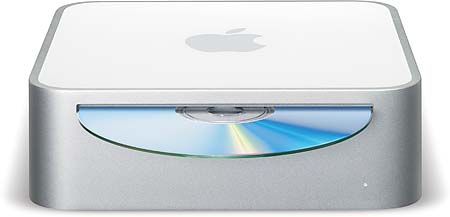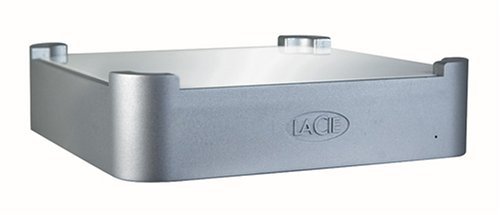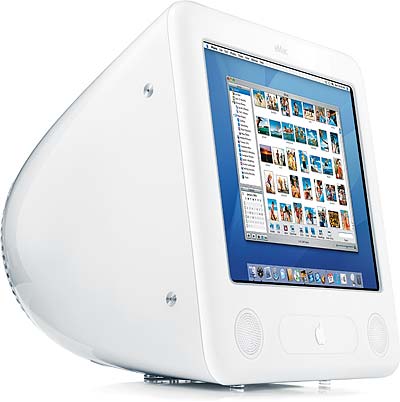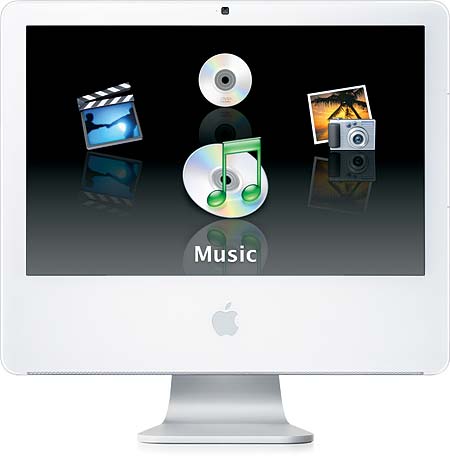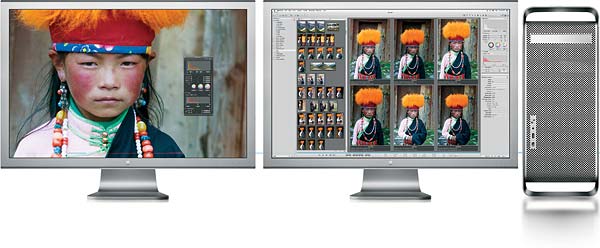Home Search Gallery How-To Books Links Workshops About Contact
Desktop Computers for Digital Photography Note: I wrote this back in 2006. Today, in 2007, most of this page is out of date and most of the links have dried up and blown away. Luckily, since in 2007 I personally still use Apple's crummiest laptop from 2003, anything you can get from Apple today is more than enough for photography and web design and everything. Just be sure to get all the RAM and the biggest optional hard drive you can, and be happy! Processor speed hasn't been relevant for a long time. Likewise, even though as of 2006 I use a hulking Quad G5 and 30" monitor at home, any of today's Mac desktops, from the Mac Mini and up, is all you really need. Just max out the RAM and hard drive. Buying more computer lets you get more done a little faster, but any of them works great. See also "Is It Worth It?" The Mac Mini The Mac
Mini: all you need to upgrade from PC for $499! As of February 2006 the MacMini is now an Intel processor. This means that it's not that great for running PhotoShop until Adobe releases, and you and I buy and pay for, CS3, to run nativly on the new processors. See my Macs with Intel Processors page. You might want to consider a leftover model with the traditional PowerPC processor. On a budget? Try the very least expensive $499 Mac Mini. It's twice as powerful as the computer on which I earn my living and create this website. The Mac Mini only costs one-third what I paid for my iBook two years ago and is almost as portable. Crazy people install these into custom cars. The Mini's only drawback is it won't work with the 30" Apple Cinema Display that costs fives times as much as the Mac Mini. You'll have to make do with a maximum of Apple's 23" Cinema Display with 1,920 x 1,200 resolution instead. It works with any display, for instance, the one on which you're reading this. The Mac Mini is the size of a good hamburger. You plug it into the monitor, keyboard and mouse from the computer it replaces, or buy new ones. It's a great computer and probably the one I'll buy my wife when she gives her windows machine the ultimate move to the recycle bin. You can expand the Mac Mini exactly as I do my laptop with external drives, or get one of the many dedicated external expansion drives that fit right under it. LaCie hard drive for expanding the Mac Mini. The eMac eMac (Courtesy of Apple) The eMac is sold to schools. "e" is for education. I'm unsure if you can get one at retail even though I see them in the kid's section of the Apple Store. They are mysteriously hard to find on Apple's website. Apple sells them in boxes of eight. They have 17" flat CRTs (picture tubes with 16" visible) at up to 1,280 x 960 pixels and G4 processors. Their allure is being inexpensive, tough to damage and tough to steal since they're big and heavy and have no small pieces attached. This is perfect for schools, but not for photography at home unless you want a very inexpensive system with a CRT. For a little more I'd suggest the far better iMac, or for a little less, the slightly more powerful and more flexible Mac Mini above. Even though I don't see them up at Apple's site you can get it from Amazon here for $1,000 with a 1.42GHz G4, 512MB RAM, Firewire, 160GB HDD and CD and DVD burner. Amazon offers a similar one here for $800 which has only 256MB of RAM and an 80 GB HDD and only burns CDs, not also DVDs. The iMac G5 The dual-core Intel versions were annnounced in January 2006. They sounded great until I realized most of my professiojnal software doesn't run natively on it's new Intel chips. All the other Apple computers use Motorola PowerPC chips, for which PhotoShop CS2 and everything else is written. See my Macs with Intel Processors page. You might want to consider a deal on a leftover PowerPC iMac. The best deal going for even more serious work today is Apple's 17" iMac G5. This is because it offers a ton of processing power and a great screen all in one inexpensive $1,300 package. An Apple consultant friend has pointed out how skilled Apple is at making it so easy to upgrade yourself into something twice as expensive as you thought you needed. He's right: he makes his living on a 5-year-old Apple, the Mac Mini is twice as good, the 17" iMac is spectacular, and if you're going for the 17" iMac why not go a little further and get the 20" iMac for $1,700, which has an even bigger and better screen? If you're coming from windows you might think something's missing: Apple fit the entire computer, drives and speakers inside the monitor! The iMac even has a remote control to use it as your music system or TV and includes its own built-in camera for videoconferencing. Walter S. Mossberg and Katherine Boehret said in the Wall Street Journal's November 30th, 2005 "Mossberg's Mailbox" column titled "A New Gold Standard for PCs" that "No desktop offered by Dell, HP, Sony or Gateway can match the new iMac G5's combination of power, elegance, simplicity, ease of use, built-in software, stability and security." iMac G5 (Courtesy of Apple) I'd be happy with a desktop iMac; today I run all my external drives via Firewire anyway. The 17" iMac has a screen better than the laptops but not quite as good as the cinema displays. The colors and brightness are great; the difference is the image on the 20" iMac and the Cinema Displays doesn't vary as you look at them different angles up and down. The laptops, and to some extent the 17" display, look darker or lighter as you look at them from above or below. Again, I do everything on a 12" laptop worse than any of these and it works great. The PowerMac Dual and Quad G5 You heavy-duty people know who you are. Today the top model is a quad-processor 2.5 GHz G5. One obvious advantage is you can drive two mammoth 30" monitors if you really want to see what you're doing. I just bought one in Jauary 2006 and you can read about it here. Two 30" monitors with PowerMac G5 (Courtesy of Apple) Graphics cards do a lot of the rendering important to video and playing games.You have three options from Apple. I've never understood why I would care about graphics cards for still photography until it was explained to me at the Apple Store. Unlike windows, the processing power and RAM of the graphics card also is used by the operating system for much of the ordinary rendering that goes on with all the lovely anti-aliased fonts and etc. that OSX does so elegantly. Therefore a hotter graphics card frees up more of the system for cranking in Photoshop. The standard graphics card ought to be fine, remember I'm on a 12" laptop. The standard card can run both a 30" and 23" monitor simultaneously. The next option up is the $350 (additional) NVIDIA GeForce 7800 GT with 256 MB SDRAM. It also can run a 30" and a 23" monitor simultaneously. If you want to run two 30" monitors ($2,500 each) then you need to the $1,300 (additional) NVIDIA Quadro FX 4500 card with 512 MB of SDRAM. See what my buddy meant about Apple making it so easy to slide you into more computer than you need? I get along just fine running six applications in 15 windows at once on a 12" laptop, yet wouldn't we all love dual 30" monitors. You can pay ten times as much as a $999 12" laptop for a $3,300 quad G5 computer, two $2,500 monitors and a $1,300 graphics card which add up to $9,600, and that's not including any extra RAM. If you do this all day like I do the extra productivity makes sense. If you're a cheapskate don't worry. NEXT > > DISPLAYS BACK: LAPTOPS Return to top of COMPUTER RECOMMENDATIONS |



